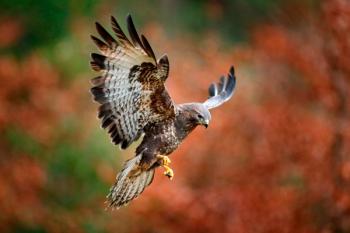
Veterinary scene Down Under: Bolstering wildlife surveillance, plus veterinary transfusion equipment and more
dvm360®’s Australian correspondent, Phil Tucak, BSc, BVMS, updates us on solving the workforce challenges facing veterinary practices, boosting wildlife surveillance to prevent pandemics, and supporting veterinary transfusion medicine.
Smooth Operating Vets
As the Australian veterinary profession grapples with shortages that contribute to high workloads and mental health problems, Jocelyn Birch Baker, BVSc Hons, founder of Smooth Operating Vets and owner of High Street Veterinary Surgery, in Queensland, hopes to help owners and managers restructure employment conditions and expectations to place into veterinary practices 1000 female veterinary professionals who have taken a career break to raise families.
“The way our profession has been approaching recruitment and retention—and the working conditions it expects employees to operate in—is unattractive to potential employees. The dearth of applicants is referred to as a shortage, but it really refers [only] to a shortage of applicants who want to work according to a model more suited to the profession 50 years ago,” said Birch Baker.
“I want a thriving and profitable clinic. To do this, I need great vets to maintain best practices and adopt new technologies. From my own experience and according to other owners, excellent vets are here in my town. They are women: fully qualified and keen to get back to practice after taking time out from their profession.”
Birch Baker’s solution is to provide real work-life balance, recognizing that each veterinarian has a family and a life, too. “People within a family, within a community, people with individual needs, hopes, aspirations, joys, crises—the whole bundle! There is a massive resource available. Women make up the majority of our profession and have different needs [than] vets from 50 years ago. The[y] don’t have the same expectations.
“My ‘mum vets’ are the primary carers for their family, so I structure my positions to suit their lifestyles. They all want to be there using their skills and abilities to save animals. I provide the space for this to happen. The benefits of this are huge: we do not have exhausted vets. We mentor and we collaborate on cases, optimizing use of the range of skills in our practice,” said Birch Baker.
Having successfully implemented this methodology at her own veterinary practice, Birch Baker is now keen to share what she has learned through her Smooth Operating Vets consultancy. “We have an eight-week program for vet practice owners and managers to show them how to adapt to the new way of attracting and retaining top-class vets, using training, templates, and resources,” she said.
“Communication is our gold. Preparation is our diamond. Everyone is prepared for anything that comes in the door. No stress. Everyone knows what is expected and has the knowledge, ability, and power to deliver.”
Boosting wildlife health surveillance to prevent pandemics
Wildlife Health Australia (WHA) has received funding from the Australian government to bolster wildlife health surveillance activities1 aimed at preventing emerging diseases in wild animals, humans, and plants. The program will build on WHA’s already extensive networks across the country to expand its capacity for investigation and analysis of wildlife diseases.
According to a statement from WHA,1 a “One Health Investigation fund” will be established to boost support for multisector collaborative field, laboratory, and epidemiological investigation into selected wildlife disease events. The new program will also support expert contribution into development and review of human health, conservation, and agricultural guidelines, standards and policies in Australia and overseas to ensure wildlife health and the drivers of disease emergence are considered.
“Protecting our native wildlife and ecosystems is also critical to pandemic prevention, with increasing potential for diseases to emerge as climate change and changes in land use put pressure on our wildlife and environment. Strengthening Australia’s national wildlife health framework, including surveillance at the human-livestock-wildlife interface, is key [to providing] early warning of emerging disease risks in Australia,” said Rupert Woods, BSc, BVMS, PhD, AM, WHA CEO.
“That’s why we are taking a ‘true One Health’ approach, that recognizes the interdependence of human, animal, and environmental health, which is essential to preventing future diseases. This significant new program will help us to better identify the underlying causes of wildlife health events, determine their relevance to human, animal and/or environmental health and inform immediate or long-term action. The program will also enable WHA to further expand and establish mutually beneficial partnerships with Aboriginal and Torres Strait Islander stakeholders and feral animal disease experts.”
WHA stated1 that the program will also seek to establish the organisation as an official World Organisation for Animal Health (OIE) Collaborating Centre on Wildlife Health for Australia and the Pacific. The Commonwealth Scientific and Industrial Research Organisation’s (CSIRO) Australian Centre for Disease Preparedness will be a key partner in delivering the initiative.
Converting human transfusion equipment for use in animals
Transfusion medicine is an important part of veterinary critical care, and apheresis equipment (which separates blood into red and white blood cells, plasma, and platelets) offers myriad options for collecting donor blood components.
The Australian-based company Teviot Technologies and its US subsidiary focus on supporting veterinary plasma, blood banking, and transfusion medicine by converting superseded human apheresis machines into devices for use in veterinary medicine.
During the past 18 months, Teviot Technologies has received 35 decommissioned human apheresis models from the Australian Red Cross Lifeblood, which are progressively being upgraded, converted into veterinary apheresis machines, and re-branded as TT-VET machines.
“We’ve developed software to suit a human apheresis machine which, together with some hardware changes, converts the machine to a veterinary device. Teviot Technologies was born from the realization that the veterinary market was using apheresis machines programmed for human use, and this was very inefficient due to the restricted parameters of the human software,” explained Felicity Macarthur, Teviot CEO.
“The TT-VET apheresis machine is used to collect blood from donor animals such as horses, dogs, camels, donkeys, and goats. Some of the products collected include plasma, platelet-rich plasma, packed red blood cells, and albumin. Other products, such as polyvalent antivenom and reagent grade serums, are used in human medicine and research.”
Teviot Technologies works with research organizations, corporations, and veterinary practices that utilize this transfusion equipment.
Reference
Major initiative announced to bolster Australia’s wildlife health and help prevent emerging diseases in wildlife, humans and agriculture. Wildlife Health Australia. January 4, 2022. Accessed February 2, 2022.
Newsletter
From exam room tips to practice management insights, get trusted veterinary news delivered straight to your inbox—subscribe to dvm360.




